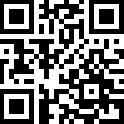The Black Ink Team’s Guide To How QR Codes Work
by Black Ink Team
The 'QR' in QR code stands for 'Quick Response.' QR codes were first used by the automotive industry in Japan to facilitate the tracking of parts during their manufacturing processes. A QR code is a two-dimensional matrix barcode which has a greater storage capacity than standard UPC barcodes. Furthermore, they can be read faster and from further distances.
QR codes can be created for free and be used to link physical displays to digital content. It doesn't matter how big it is; as long as the black squares and white squares are in the right spots, the QR code will function the same. It can be as large as a billboard or as small as a postage stamp.
One example of how QR codes can be used by a small independent retailer is if they are placed around the store to give customers access to information. Many products have a long list of specifications, and a customer may appreciate having access to a digital one over a physical one because then they can quickly search through it for the specific information they need.

Another example would be if the retailer is hosting events. By simply placing a QR code in the store, customers who scan it can automatically add the event to their calendar or share it with friends. QR codes can interact with smartphones' native calendar, contacts, and even text-messaging apps.
You can print QR codes from standard printers, or hire a company to print custom stickers which you can then place anywhere. QR codes do not have to be in black and white; as long as the colors you use are contrasting enough, they can be matched to your store's brand image to make your product displays look more interesting.
QR codes bridge the gap between the physical and the digital. Independent dealers can use them to give their customers quicker access to product information, as well as promote events. You can learn how to use them easily; in fact, once you are done reading this article, we will be preaching to the choir.
